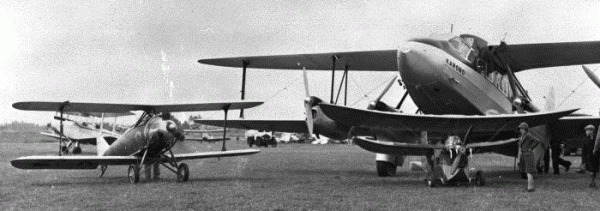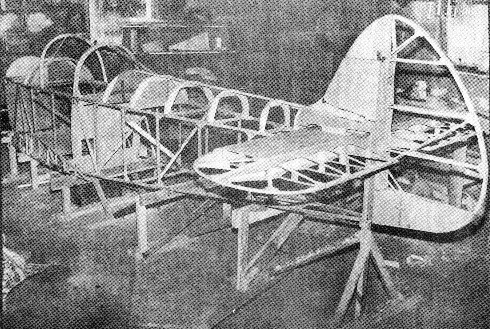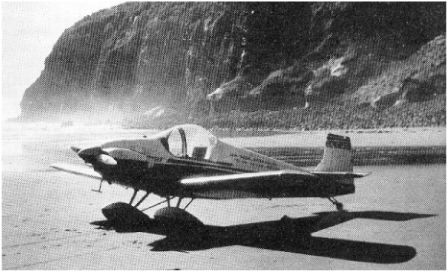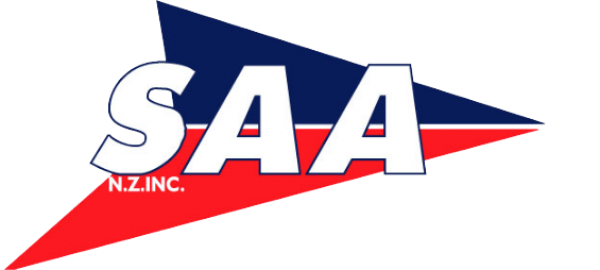How and why SAANZ came into being
SAANZ has its origins in the 'Ultra-Light Aircraft Association' (ULAA), created by a group of enthusiasts in the early 1960s. Members constructed their own aircraft from designs approved by Civil Aviation. The ULAA stated its aims as being to 'assist and foster the construction and flying of Ultra-Light Aircraft in New Zealand'.

Tui Special and Flying Flea at an Air Pageant, New Plymouth 1930s, with a Union Airways
DH Express Airliner in the background.
A change of name and focus
A change of name came in 1964 to the 'N.Z. Amateur Aircraft Constructors Association Inc' (NZAACA). This name change dispensed with the restrictive interpretation of 'Ultra-Light Aircraft' and enabled a more general term to be used, 'Amateur-built Aircraft'.

Clarry Healy's Taylor Monoplane under construction = from 1968 Sport Flying Magazine
Amateur-built Aircraft – a matter of economics
Then, as now, certificated aircraft were too expensive for the average person to buy. The advent of amateur-built aircraft enabled the construction of an aircraft over time by purchasing the necessary parts and materials as and when required.
Over this period import licensing and currency control prevented easy access to overseas suppliers. Most items had to be purchased from established suppliers within New Zealand or from war surplus stocks. New certified engines were prohibitively priced and the New Zealand Civil Aviation Airworthiness Requirements of the time limited their power to 100hp.

 A Druine Turbulent on a West Coast beach, from a 1972 Sport Flying Magazine
A Druine Turbulent on a West Coast beach, from a 1972 Sport Flying Magazine
Enter the humble Volkswagen
It was not surprising therefore that the humble Volkswagen 1200cc engine became the first favourite to be converted to power the early Druine Turbulents.
Changes in restrictions
Building an aircraft in the 1960s, 70s and 80s was far more restrictive than it is today. With the 100hp horsepower limitation came a 1500lb gross weight restriction, a 10lb/sq. ft. wing loading and a two person seating maximum. Civil Aviation was also required to approve plans, carry out stage inspections throughout construction, and to approve all materials and modifications.
1990 saw a policy change within Civil Aviation, adopting a system very similar to the US Federal Aviation Administration (FAA).
This system was loosely described as the Experimental System. This system dispensed with the old requirements of Civil Aviation Inspections and approval of aircraft types, materials and modifications.
Airworthiness becomes the responsibility of the constructor
With the advent of the Experimental System, the aircraft constructor became responsible for his/her own type design, materials, construction, modifications and flight-testing.
SAANZ is born
Originally the NZAACA had been an association of separate clubs from around the country. Due to low membership numbers some clubs were individually unable to meet the criteria for legal incorporation. In 1995 the structure changed to being an association of individual members, allowing all club members to be part of a nationwide incorporated society. This confers upon every member all of the benefits and legal protection provided by that status.
Around this time amateur-aircraft building – or home-building as it is now known - and flying was becoming a more widely recognised sport. Also in 1995 NZAACA reflected this evolution by changing its name to 'Sport Aircraft Association NZ Incorporated' – the SAANZ we know today.
